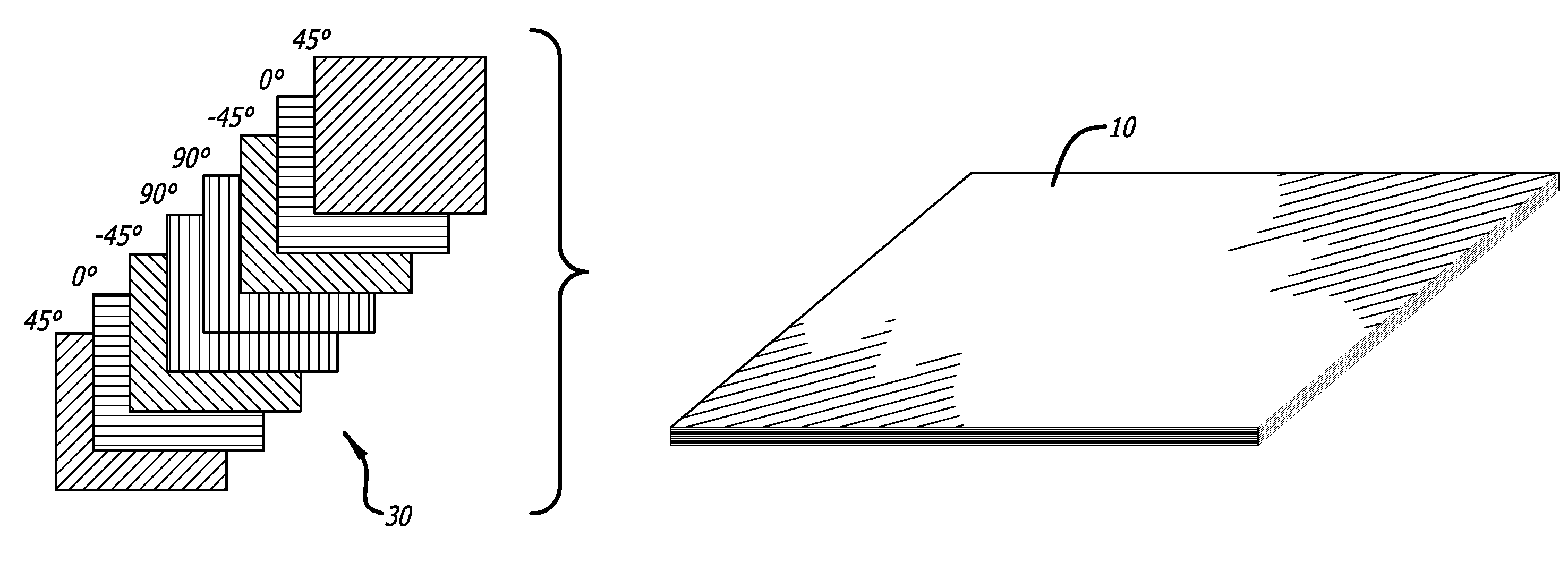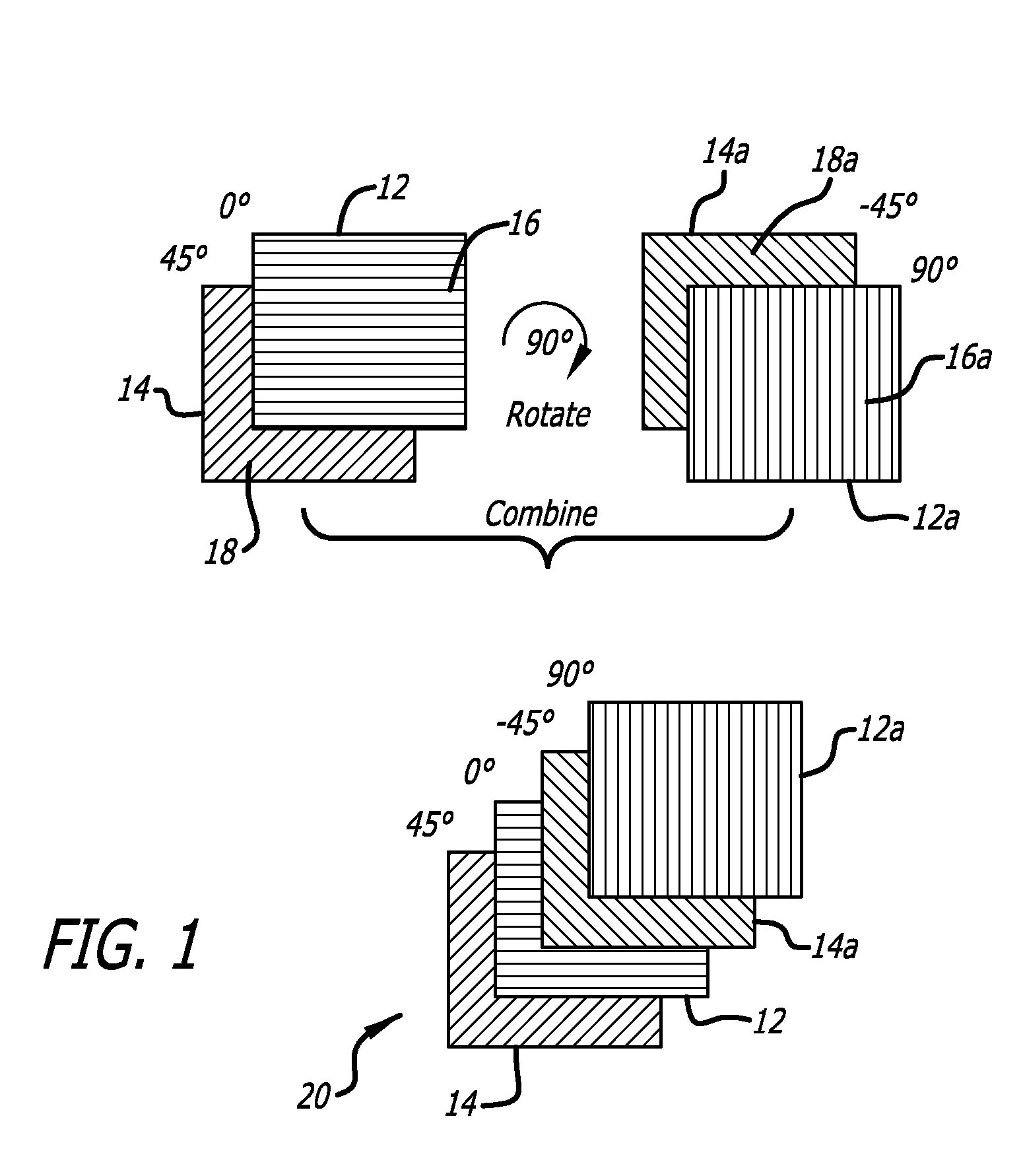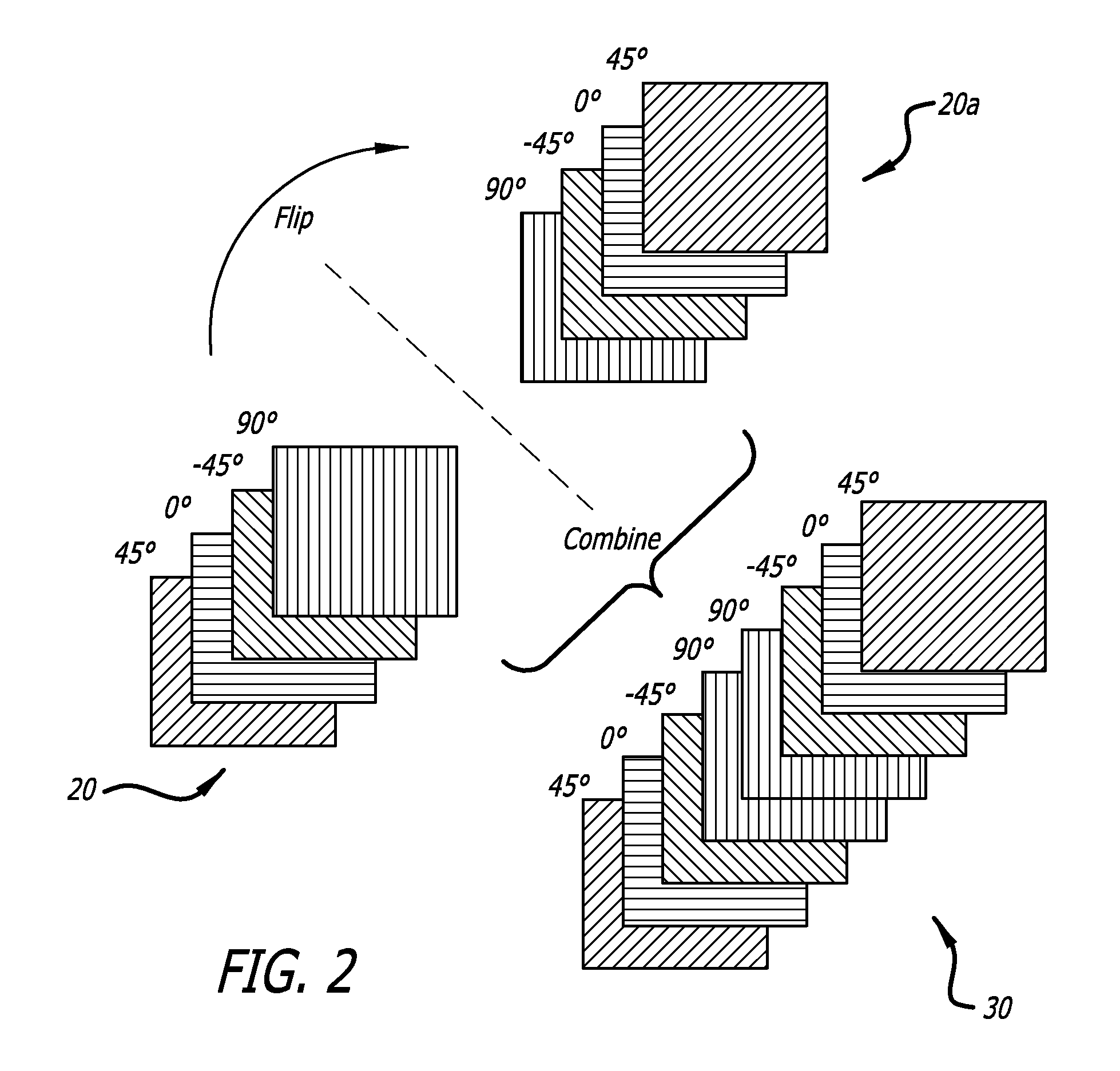Method of molding complex composite parts using pre-plied multi-directional continuous fiber laminate
a technology of continuous fiber and composite parts, applied in the field of methods, can solve the problems of long and costly process of lay-up procedure using ud tape, unsuitable unidirectional tape for use as molding compound, and inability to manufacture complex three-dimensional parts using ud tap
- Summary
- Abstract
- Description
- Claims
- Application Information
AI Technical Summary
Benefits of technology
Problems solved by technology
Method used
Image
Examples
Embodiment Construction
[0024]The present invention involves the formation and use of pre-plied, multi-directional laminates that are used in compression molding processes to form three dimensional parts. The invention is particularly well-suited for making three dimensional parts that have complex shapes and which are designed to carry large loads. Although the present invention finds use mainly in the aerospace industry, the process may also be used in accordance with the present invention to produce three dimensional structures that are suitable for a wide variety of applications where high strength and light weight are desired. The following detailed description is directed mainly to the production of aircraft parts as the preferred types of structures made using the present invention. It will be understood that the invention also has wide application to the production of other types of high strength parts, such as any number of complex three dimensional parts that are used in the automotive, railway, ...
PUM
| Property | Measurement | Unit |
|---|---|---|
| width | aaaaa | aaaaa |
| size | aaaaa | aaaaa |
| thick | aaaaa | aaaaa |
Abstract
Description
Claims
Application Information
 Login to View More
Login to View More - R&D
- Intellectual Property
- Life Sciences
- Materials
- Tech Scout
- Unparalleled Data Quality
- Higher Quality Content
- 60% Fewer Hallucinations
Browse by: Latest US Patents, China's latest patents, Technical Efficacy Thesaurus, Application Domain, Technology Topic, Popular Technical Reports.
© 2025 PatSnap. All rights reserved.Legal|Privacy policy|Modern Slavery Act Transparency Statement|Sitemap|About US| Contact US: help@patsnap.com



